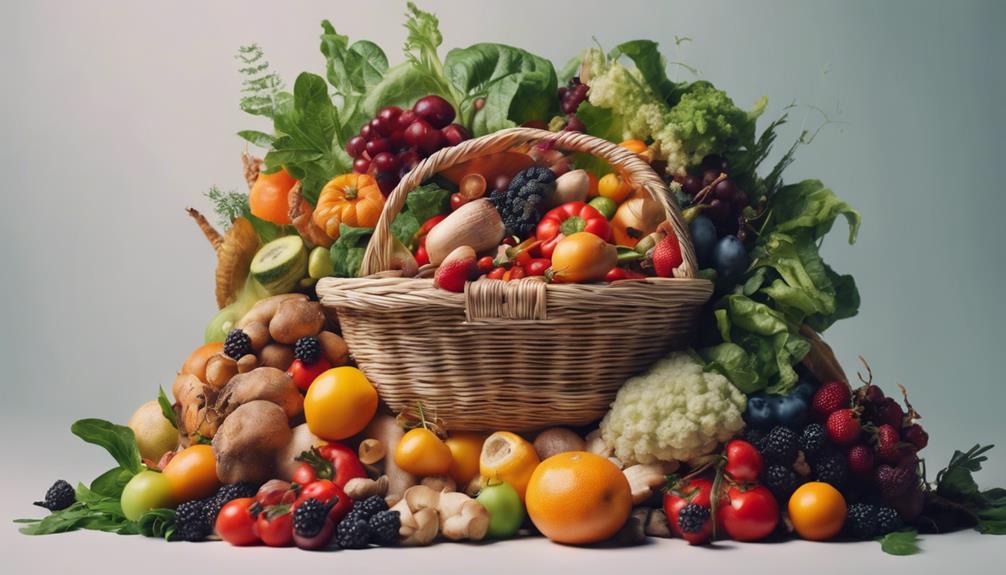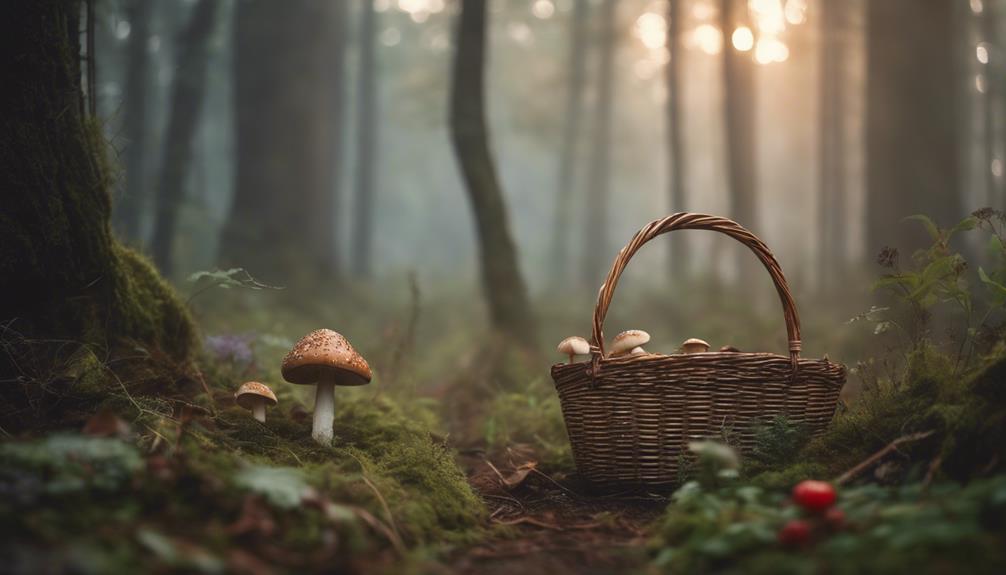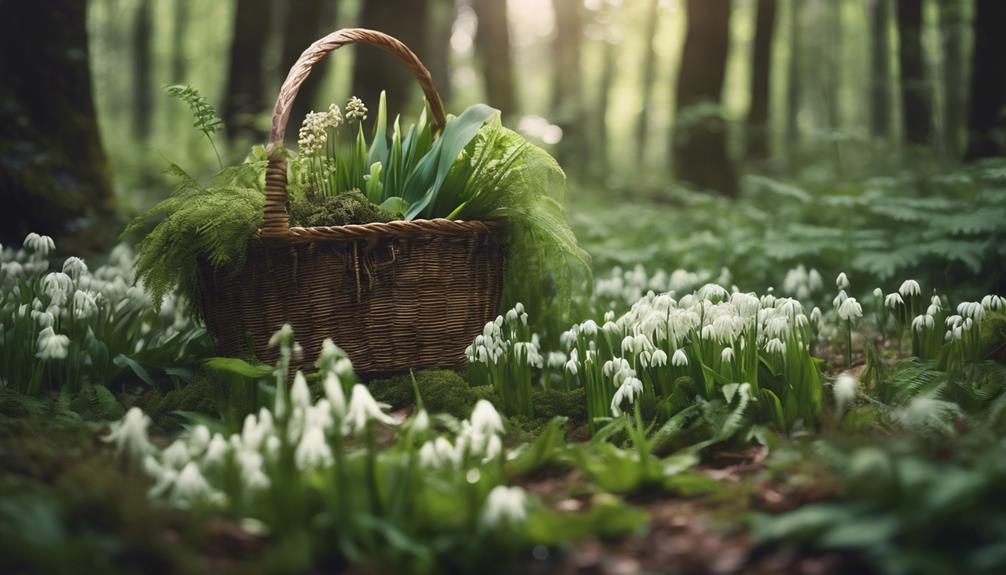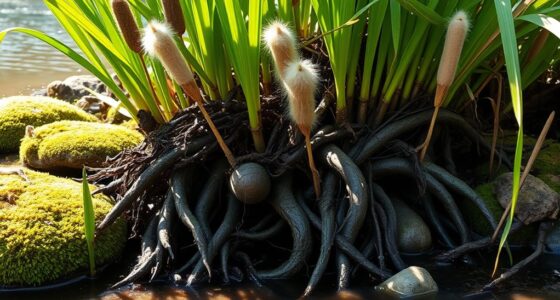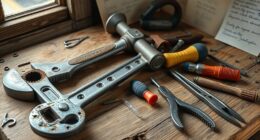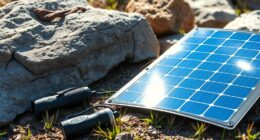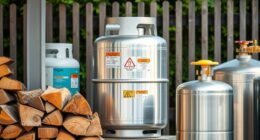You're in luck! Right now, wild garlic, ramps, wild asparagus, and strawberries are at their peak season. To make the most of your foraging adventures, it's important to know what's in season. Our Forager's Calendar helps you identify wild edibles and tracks their peak seasons, providing monthly guides and regional spotlights. Stay safe and responsible while foraging by understanding laws, regulations, and local guidelines. From wild mushrooms to seasonal fruits, berries, and winter greens, there are year-round foraging opportunities waiting for you. Dive deeper to discover more about what's in season and how to make the most of it.
Key Takeaways
- Wild garlic, ramps, wild asparagus, and strawberries are currently in season, according to the Forager's Calendar.
- The Forager's Calendar helps identify wild edibles and tracks their peak seasons to ensure you don't miss the harvest window.
- Monthly foraging guides provide insights on when various foods are ripe, helping you plan your foraging trips effectively.
- Regional foraging spotlights offer specific information on wild foods in different areas, catering to your local foraging needs.
- Year-round foraging opportunities include wild mushrooms, seasonal fruits, berries, and winter greens, providing a diverse array of wild edibles.
The Forager's Calendar Uncovered
With the Forager's Calendar, you'll never be caught off guard by a sudden abundance of wild edibles, ensuring you're always prepared to harvest the freshest species at their peak.
This innovative tool is designed to help you find and identify wild foods, providing valuable insights into the world of foraging. By tracking numerous species and their peak seasons, you'll never miss a foraging season again.
The Forager's Calendar is an interactive guide that covers a wide range of species found in eastern North America, ensuring you're always in the know about what's in season. With this calendar, you'll avoid missing harvest windows and make the most of the wild foods available to you.
Whether you're a seasoned forager or just starting out, this tool is essential for anyone looking to make the most of nature's bounty. By staying on top of what's in season, you'll be able to plan your foraging trips with confidence and enjoy the freshest, most flavorful wild foods all year round.
What's in Season This Month

As you head out on your foraging adventure this month, you can expect to find an abundance of wild edibles and herbs ripe for the picking. One of the most exciting finds this time of year is wild garlic, also known as ramps. These pungent plants are at their peak, with their leaves and bulbs ready to be harvested.
When foraging for wild garlic, look for clusters of green shoots with a distinctive garlic aroma. Be sure to identify them correctly, as they can be mistaken for similar-looking poisonous plants.
In addition to wild garlic, you'll also find an array of other delicious and nutritious wild edibles, from tender shoots of wild asparagus to the sweet, tangy flavor of wild strawberries. This month, the forests and fields are bursting with flavor and nutrition, just waiting to be discovered.
Foraging Responsibly and Safely

Understanding the laws and regulations surrounding wild food gathering in your area is crucial as you begin foraging, so you're not accidentally trespassing or over-harvesting.
You should also watch out for pests, diseases, or other signs of damage on the plants you're collecting, as these can affect their edibility and your health.
Know the Law
You must familiarize yourself with local regulations and respect protected areas before you start foraging, making sure that your pursuit of wild edibles doesn't harm the environment or break the law.
Understanding the law is important when it comes to foraging for edible plants. You need to know what areas are off-limits, what permits you might need, and what regulations govern the collection of wild edibles in your area. This knowledge will help you avoid fines, penalties, and even criminal charges.
It's also essential to respect private property and obtain permission before foraging on someone else's land. Remember, responsible foraging involves not only identifying edible plants correctly but also being mindful of the environment and local laws. By doing so, you'll ensure that your foraging adventures are both enjoyable and sustainable.
Take the time to research and understand the laws and regulations in your area, and you'll be well on your way to becoming a responsible and ethical forager.
Watch for Pests
Prior to starting your foraging expedition, carefully examine the plants for any signs of pest infestation, as it's crucial to ensure that the food you gather is safe to eat and of high quality. Pests have the potential to contaminate wild foods and herbs, affecting both their taste and edibility. You certainly don't want to inadvertently bring home a batch of berries that are infested with insects or mushrooms that are moldy.
While foraging, remain alert for pests such as insects, rodents, and mold that could impact the wild food you collect. By inspecting plants for pest damage, you can steer clear of consuming any potentially harmful substances. For instance, the presence of holes in the leaves or stems may signal an insect infestation. Likewise, if you observe mold or fungus growing on the plant, it's advisable to avoid it.
Monthly Foraging Guide Overview

Exploring the world of foraging requires staying on top of what's in season. That's where the Monthly Foraging Guide comes in, providing you with a roadmap to the best wild edibles and herbs available each month.
From a seasonal foraging calendar to regional highlights, you'll get the inside scoop on what to expect and when. You’ll also discover insights on the natural rhythms of coastal ecosystems, from blooming wildflowers to the migration patterns of marine wildlife. Plus, learn how seabirds foraging behavior shifts throughout the year, offering a fascinating glimpse into their survival strategies. Whether you’re a novice or an experienced forager, these pointers will help you make the most of each season’s offerings while staying attuned to the delicate balance of nature. Additionally, understanding the interplay between tides, weather patterns, and seabird foraging behavior can guide your exploration along the shores, allowing for more fruitful and responsible foraging trips. By observing how seabird foraging behavior adapts to the availability of coastal food sources, you can time your own foraging efforts for optimal abundance and sustainability. This knowledge deepens your connection to the environment, encouraging practices that protect and preserve these fragile ecosystems for future generations.
Seasonal Foraging Calendar
This Seasonal Foraging Calendar is your go-to guide for tracking the peak seasons of wild edibles and herbs in eastern North America, month by month.
As you explore the calendar, you'll discover when wild mushrooms, like chanterelles and oyster mushrooms, are ripe for the picking. You'll also learn when other wild foods like chickweed, sorrel, and nettle are at their best.
The calendar provides a detailed overview of what's in season, helping you plan your foraging trips and make the most of your time outdoors. With interactive features, you can easily scout out new locations and stay informed about flowers in bloom throughout the year.
Whether you're a seasoned forager or just starting out, this calendar is an essential tool for tracking the peak seasons of your favorite wild edibles.
Regional Foraging Highlights
You can expect to find a diverse array of wild edibles and herbs in season each month, depending on your region, and our monthly foraging guide will walk you through the best ones to forage for. From wild mushrooms to berries, our guide will give you a detailed overview of what's in season right now in your area.
Whether you're a seasoned forager or just starting out, our regional highlights will help you identify the best wild foods to forage for each month.
In the Northeast, for example, you can expect to find wild mushrooms like chanterelles and oyster mushrooms in the summer months. Meanwhile, in the Pacific Northwest, you'll find an abundance of wild berries like salmonberries and thimbleberries. Our guide will break down the peak seasons for each species, so you can plan your foraging trips accordingly.
With our regional foraging highlights, you'll never miss out on the best wild edibles and herbs in season. Stay informed and happy foraging!
Wild Edibles to Expect
Your monthly foraging guide is packed with a diverse array of wild edibles, with January spotlighting chickweed, sorrel, nettle, and chervil. As you venture out, you'll discover these early spring plants are just the beginning of the foraging journey.
In February, you'll find alexanders, mushrooms, and nettles waiting to be discovered. March brings the first signs of green spears, a delicious addition to your wild edible collection.
As spring unfolds, April's wild garlic, garlic mustard, and cow parsley offer a flavorful mix of options. May's warmer weather brings lime, sorrel, and chickweed back into season, providing a fresh wave of foraging opportunities.
Whether you're a seasoned forager or just starting out, this monthly guide will help you navigate the world of wild edibles. By knowing what's in season, you'll be able to make the most of your foraging adventures, exploring the diverse range of flavors and textures that nature has to offer.
Seasonal Recipes and Ideas

Now that you've got a basket full of foraged goodies, it's time to get creative in the kitchen and whip up some seasonal recipes that showcase their unique flavors and textures. One of the best ways to enjoy your wild garlic haul is to make a delicious pesto to toss with pasta or use as a dip. You can also add it to soups, stews, or salads for an extra boost of flavor.
| Foraged Ingredient | Recipe Idea | Cooking Technique |
|---|---|---|
| Wild Garlic | Pesto | Blend with olive oil, garlic, and parmesan |
| Chickweed | Salad | Toss with mixed greens, cherry tomatoes, and balsamic vinaigrette |
| Nettles | Bread | Mix with flour, yeast, and water to create a savory loaf |
| Wild Mushrooms | Pasta | Sauté with garlic, onions, and herbs, then toss with linguine |
| Deadnettle | Infused Oil | Steep in olive oil with lemon slices and herbs for a flavorful finish |
Get creative with your foraged finds and experiment with different cooking techniques to bring out the best flavors and textures. Try infusing oils, making vinegars, or adding wild herbs to your favorite baked goods. The possibilities are endless!
Regional Foraging Spotlight

Regional foraging guides help you pinpoint the freshest, most flavorful wild foods and herbs in your area, ensuring that every foraging trip yields a bounty of seasonal delights.
Through the Regional Foraging Spotlight, you'll discover the best times to forage for specific plants and enhance your foraging experience.
For instance, if you're in the Pacific Northwest, you'll want to keep an eye out for wild mushrooms like chanterelles and oyster mushrooms, which are typically in season from September to November.
Foraging Tools and Resources

One essential set of tools for any forager is a reliable calendar and resources to guide you through the ever-changing seasons of wild foods and herbs.
As you venture out to forage for wild mushrooms or other delicacies, staying on top of what's in season is important. That's where the Interactive Foragers Calendar comes in – a valuable tool designed to help you track peak seasons of wild edibles and avoid missing harvest windows.
This calendar is part of a detailed website application connected to the Foraging Knowledgebase, offering a wealth of information on scouting, identifying, and using various species. With its focus on eastern North America, the calendar covers a range of plants, including flowers in bloom, and provides tips on safety and toxic lookalikes.
Regular updates make sure the calendar remains a dynamic and valuable resource for foragers like you. By utilizing this tool, you'll be well-equipped to navigate the world of foraging with confidence, whether you're on the hunt for wild mushrooms or other hidden gems.
Year-Round Foraging Opportunities

As you venture out to forage, you'll discover that every season offers a diverse array of wild edibles waiting to be uncovered. By embracing the changing seasons, you can enjoy a consistent supply of fresh, wild ingredients to elevate your culinary creations.
Here are just a few examples of the year-round foraging opportunities available:
- Wild mushrooms: From oyster mushrooms in the spring to chanterelles in the summer, and honey mushrooms in the fall, there's always a variety of wild mushrooms to discover.
- Seasonal fruits and berries: Enjoy tart wild strawberries in the spring, juicy blackberries in the summer, and sweet persimmons in the fall.
- Winter greens: Forage for hardy winter greens like kale, spinach, and Brussels sprouts to add some freshness to your winter meals.
Frequently Asked Questions
What Is in Season for Foraging?
You're wondering what's in season for foraging? Right now, you can find wild garlic, chickweed, and nettles in spring, while summer brings sea beet, elderflower, and bilberries – just remember to identify them positively and get permission before you pick!
What Are the Wild Fruits in Indiana?
You're searching for wild fruits in Indiana, and you'll find pawpaws, blackberries, persimmons, elderberries, and wild grapes growing in forests, trails, near water sources, and open fields across the state.
How Do You Know Where to Forage?
Did you know that 70% of foragers rely on word of mouth to find foraging spots? You can ditch the guessing game by using online foraging maps, consulting with local experts, and scouting out public lands to find the best foraging spots.
What Is the Forage in Summer?
You're heading out to forage in the summer, and you're wondering what's in season. Well, you'll find an abundance of berries, wild herbs like mint and chamomile, edible flowers, and wild greens like purslane and lamb's quarters.
Conclusion
As you venture out to forage, remember that the thrill of the hunt is in the discovery. Like a treasure map, this guide has given you the clues to uncover nature's hidden gems.
Now, go forth and forage like a pro! With the seasons as your guide, the great outdoors as your playground, and responsible foraging practices as your mantra, the world is your wild pantry, waiting to be devoured.

